Of all the superheroes, Henry Pym was the first of his type and there are now only three. This has not served the character well but may serve him better in the future.
Henry Pym first appeared in Tales to Astonish 27, which was back in its all-monster days. In fact, Tales to Astonish started in 1959 and was published when the company’s name was still Atlas. (Issue 21 was the first to carry the first Marvel Logo.) And Henry Pym was not a superhero back then. He was a scientist in the usual sort of horror story that Atlas published in the lean times of the Dark Age of comics.
That is, he’s a scientist who doesn’t listen to the opinions of peers who all tell him not to do this, who knows (he just knows) he can provide a boon to humanity, give it a great leap forward if he can just do what is impossible for everyone else. Originally, Henry Pym was not blond, he had brown hair. Basically, he was the early Reed Richards.
They’re both driven know-it-alls who experiment on themselves and wind up in extraordinary circumstances. Their stories appear in November 1961 (Fantastic Four) and January 1962 (Tales to Astonish). Reed Richards goes into space without shielding. Henry Pym shrinks himself down and goes into an ant hill. The difference of the stories is that Richards was designed to be a superhero and had friends. Pym was designed to be a one-shot and operated alone.
This was how Marvel was doing things. The same ideas were done over with different twists. Or example, in Tales to Astonish 25, two issues before Henry Pym, in the same month that the Fantastic Four debuted, had a cover story about the Creature from Krogarr. That Creature looks an awful lot like the Thing. It’s orange, apparently made out of mud or rocks, and has three fingers and four toes. The same ideas were being rehashed until they worked or, in this case, stopped working.
In Henry Pym’s case, the idea isn’t beating the Soviets, but all the things shrinking stuff will do for humanity. Things like food will be cheap to ship and so on. The gaps in this illusion are so easy to see that the young readers of the time must have been meant to see them. But still the super-smart guy pours the shrinking fluid on himself and gets hauled into an ant hill.
And then it’s on for one and all, mostly all, because the ants try to kill him. Pym only survives because one ant for no particular reason turns traitor…sorry, there is a friendly ant that saves him.
Pym realizes the danger of his potion and with all of one setback to guide him, pours the stuff down the drain. Where it makes little tiny rats? I mean, superbrain makes a long line of dick moves in this.
It’s a simple story of someone pushing things too far and realizing there were things Man was not meant to do. Fiction from the thirties to the fifties were filled with that sort of stuff.
Then the sales figures came in. The issue sold well. Really well. And without anything like a survey or a focus group, Lee decided Henry Pym sold the issue. It makes sense if sales of the issue after Pym dropped to previous levels and we assume it was the cover story alone that sold the issue. We also have to assume, like Lee did, that people wanted to see this as a superhero thing, not as a continuing horror story.
After all, in Tales to Astonish 28 another scientist took another potion and became the Gorilla-Man and in the suspiciously short period of two issues he came back (in issue 30) by popular demand in The Return of the Gorilla-Man. If he was really so popular, why didn’t he become a superhero? Why don’t they pull him out and make him a superhero now?
So, as part of the process of making Marvel a superhero comic company from issue 35 on, Tales to Astonish would be a combination of its usual horror and monster tales and a new superhero, Ant-Man.
The transformation took eight months and it was a rushed job that has never been made good. Henry Pym as Ant-Man has the power to shrink but he also gets a helmet which converts his spoken words into commands black ants obey.
His costume is red and blue with black trim and the silver helmet. The serum he poured on his arm is taken from the horror story and put into the superhero story. It is an inconvenience to the superhero story where one isn’t needed, as shown by the fact it would be upgraded to a more easily used gas, then pills, then he just had to will himself to shrink or grow.
At this point, Henry Pym is in a unique position. He is a character who becomes a superhero by accident as part of his publishing history. This is not like Barry Allen, who as a character became a superhero by an accident (collective repressed memory: nobody remember the version is a time-traveling bolt of lighting that gives himself super speed, or that other stupid version). It’s a character created for another purpose who is converted into a superhero.
The elements from the original story were turned into a superhero identity. But there wasn’t enough thought put into it. Much like Daredevil, the stories were nothing to write home about. You can remember some of Spider-Man’s first ten villains, there were classics there and it made people want to buy the next issue. Daredevil, not so much and Ant-Man not very much at all. That’s right, I just called his first ten villains worse than Daredevil’s.
The first ten villains of Ant-Man are: some Soviet spies, Comrade X (another spy, and see The Crying Game), The Protector (a guy in a mask with a disintegration gun who runs a protection racket), Egghead, the Scarlet Beetle (a beetle affected by radiation), the Hijacker, the Voice of Doom (he had the power that people would obey his commands, like a rough draft for the Purple Man), the Mad Master of Time (who could make people old), Kosmos the space villain, Egghead again, and a cyclops from outer space seeing if Earth is ready for invasion.
The only thing notable there is Egghead and he never got into the middle rank of villains, always being low grade. He could have been much better if he had been Henry Pym’s professor at college. “When you are twelve feet tall, I call you Giant-Man, when you are less than an inch, I call you Ant-Man. What do I call you when you’re at your normal height, Mr Pym?” “Sir, Egghead, you call me Sir.”
The other villains are at best forgettable and at worst become part of the collective repressed memories of fandom. And note that there are two space monsters and one mutant: drawn differently but otherwise basically interchangeable.
The best three villains they came up with in the whole series were Egghead, the Porcupine, the Human Top (later called Whirlwind), and the Black Knight. The best you can say about them is they’re serviceable but none of them are really top notch. His fight with the Hulk wasn’t bad.
And of the others, Comrade X, the Protector, and the Hijacker are all twist stories where the innocent party, surprise, put on a mask to become the bad guy.
So there was minimal imagination put into Ant-Man’s gimmick, his enemies, or the plots of his stories.
Is it any wonder that Pym’s adventures in Tales to Astonish only lasted from issue 35 to issue 69? He didn’t even fill the book, so you’d probably count each issue as, like, half an issue. So it was a 17 issue run that ended in July 1965. Two better than the New Invaders. Not a great success. He left the Avengers in April 1965, after fifteen issues. Just as many as the New Invaders. For a supposedly major character, that’s pretty bad. So, is it any wonder why he did so badly?
Yes. Three reasons to wonder, to be exact.
In the issue where Ant-Man faced Kosmos (44), he also got a partner, Janet van Dyne aka the Wasp. She was the most imaginative thing in the series, and has basically had a better run than Henry Pym. She is one of Marvel’s better females character and is severely underplayed. She could sustain stories in a solo series in her own right and if she were a DC character she already would have done so for a short run that would be canceled for reasons corporate editorial interference.
Second, Ant-Man joined the Avengers as a founding member. He had a platform which should have helped boost sales to his own title but it didn’t. It should have boosted his credibility but it didn’t do that either. In Tales to Astonish he should have gotten the whole title or shared the other half of the comic with a different superhero.
Third, Henry Pym got the power to grow without having shrunk first. In other words, he became Giant-Man in issue 49 of Tales to Astonish. The effort that went into this can be guessed from the very clever name. With the new size came a new cybernetic helmet which looked like a mask with antenna, so he either also invented the ear microphone thirty years earlier than we had it, or learned how to pick up human thought waves.
Since he later scanned the mind of the dead Wonderman, the latter is actually more likely but I don’t know of any case where that connection has been made.
When Pym became Giant-Man it was a defeat. Stan Lee himself has said he loved Ant-Man but believed artists let the character down. He kept reminding them to draw Ant-Man next to things like a matchbook so people would get an idea of the size of scale.
I don’t think this was the problem. For a start, by putting him with monster stories you virtually limited his audience to people who liked him as a superhero and monster stories. And, if they weren’t thrilled with monster stories, you just doubled the price for his comic books. Go ahead, pick any Marvel title right now and double the cover price and see how sales go. I’ll even go one better, give half the comic to the lead superhero character and the other half to your choice of monsters, horror, or teen comedy. How do you think sales will go?
Marvel virtually admitted this was a problem when they put the Hulk in as the back-up feature with issue 60. The problem was, by issue 70 Henry Pym was dropped and the Sub-Mariner put in.
And Henry Pym might be one character, but Ant-Man and Giant-Man are not. Marvel’s faith in Ant-Man can be seen in the fact that in issue 49 he became Giant-Man, and he stayed Giant-Man on the covers until the last issue he appeared. issue 69. Still Ant-man? Then he is the only superhero to have two names and virtually two gimmicks at once. How’d that work out for him? Did it work out so well that you think we’ll see a Marvel superhero deciding which masked identity to take in order to fight this particular crime?
Henry Pym later lost his size changing power and became stuck at ten feet in height. Basically he became a costumed, crime fighting, Andre the Giant. The costume change came about because the Scarlet Witch made him a new costume just in case he came back. Yep, sat there a sewed a tight fitting costume without taking any measurements. She used the national colors of Sweden and everything. Now he was called Goliath because Giant-Man was too corny, he thought. Well, it wasn’t Andre the Goliath and more people knew about him than you. And you’re a super genius, you couldn’t have looked at a thesaurus?
Then he regained his size changing powers but pretty much ignored his Ant-Man size and persona. He left the helmet at home until he learned how to talk to red ants as well. He was still Goliath, not Giant-Man. He also wore a costume possibly too bright for a mardi gras.
Then he became Yellowjacket and, again, nobody seems to have noticed what this meant. I’ve seen a lot of people mention Henry Pym took on the identity of the Wasp in tribute to Janet van Dyne who, like any superhero, dealt with death like most people deal with headcolds. But he’d already done that.
His identity of Yellowjacket is named after a flying insect that stings. He has artificial wings which let him fly. His gloves have a ray weapon called stingers. All of these things were and are attributes of the Wasp. He was doing so badly that they made him a bad-ass version of his own partner. It’s as if Batman changed his name to the Shrike or something. And let’s not forget, though he’s far behind, in Marvel, Henry Pym is probably second to only to Janet van Dyne in how many costumes he wears. (Over all comics he’s probably second to Supergirl as well.)
The one additional thing the Wasp/van Dyne picked up from Henry Pym was the power to be a giant which she uses very rarely.
After that, Henry Pym has yet one more transformation, this time into Dr Pym. He wears bright red overalls and uses his size-changing powers not on himself but on the items in his many big pockets. Sounds like a five-year-old’s pre-wet dream. He also has another robotic companion, this one named Rover. Rover was loyal and spat fire, acid, or gas and was also a flying car. Like many Pym things, it went by the boards.
Since then he has drifted from one identity to another, cycling through his incarnations to suit whatever the plot needs at the moment no matter how bad that plot is. And the whole thing became likely – not inevitable, but likely – when they created him as a superhero.
The problem with Henry Pym is they didn’t keep a unifying principle strong enough to give the character direction.
He shrinks, he grows, he communicates with ants, he communicates with bees, but he doesn’t communicate with both at the same time, he puts on artificial wings or grows them as he shrinks, he can fly when full sized as Yellowjacket (though he doesn’t do it often), and…insects? No, Goliath doesn’t involve insects.
Note in all of these changes I have only spoken of name, costume, powers, and insects controlled. I’ve ignored the incredibly convoluted story of what he is an expert in and his mental state. This is some of the worst, most illogical dreck to be in a comic book.
At one point, Henry Pym is separated from his wife, is in a cheap hotel, and has no money. His patents have all lapsed. What? At the time patents were for seventeen years and could be renewed once. Just take 17 years. What age is Henry Pym when he’s in that hotel? It’s at least seventeen years after his last patent was registered, so he would be in his forties at least and more likely his fifties. Nothing else in the story indicates that’s his age.
What patents, by the way? He didn’t patent his shrinking or growing formulas. He didn’t patent his communication with insects. He didn’t patent his artificial flying wings (damn him). And he didn’t patent his specialized cells or transplanting them in a host with a very different genetic signature – from wasp to human, as it happens. I mean, these things would have changed everything we do in the world but he never sold them to the general public.
And why is he unemployed? With what he’s invented, multinational corporations would come, throw millions at him and just say, ‘make something.’
And did anybody notice the ‘patent money ran out’ was previously used for Reed Richards in the Fantastic Four? OK, Reed lost the money in shares, but it’s really the same thing. Can anybody come up with a new – as in non-recycled – idea for Henry Pym? I mean one that’s good.
After all, his identity can be pushed around with a cheap pop of changing costume or name or super power. The same thing happened when they decided he would have severe self esteem issues. Sure, he saved the world a couple times, New York City several times more, and countless individuals and small groups. He discovered things which would earn so many Nobel prizes he’d need a freaking wheelbarrow to carry half of them.
And yet, they made him desperate for acceptance from people who already accepted him, greedy for a success he had already exceeded, and a fame he had never sought but still received.
He even hit his wife. I know that the excuse is the original intention was he would strike her accidentally while gesturing to something. I don’t buy that. It would mean the action has no effect on the plot and that Henry Pym moves his arm to point at something with such force that he knocks a woman to the ground. Who in the world, without super strength, does that? And his wife just takes it rather than shrinks down and starts the war we all know she can win. Honest, they said he made her more powerful than him.
She’s the superheroine who saves the world but gets hurt when accidentally hit. That’s your strong female character? Seriously? Honestly? For real?
It was not a low point for the character Henry Pym, it was a low point for Marvel. The thing is, Henry Pym got past it.
I think the weakness of the Marvel method is that, with one man controlling everything, you get characters who get pushed and those who don’t. Pym didn’t get a push. Nobody cared enough about what could have been one of the most engaging characters ever.
I can say this with some confidence because of the animated series The Avengers: Earth’s Mightiest Heroes.
In this series, Henry Pym is a scientist first. He takes up crime fighting because he has to. He is more interested in what super powers can tell us about the nature of the universe than any other character I’ve ever seen. He is reluctant to have a relationship with Janet van Dyne, the Wasp, because he’s naturally unsure of himself: spent all that time hitting the USB drives. He has a revulsion to using violence to solve problems.
But he uses some of the cleverest techniques for dealing with supervillains, and the most imaginative uses of his powers that I’ve ever seen.
They made a character who even went into the insane Yellowjacket story. But they did so with motivations, plot, and characterization that wouldn’t quit. The whole series is worth watching for that alone, but as there are no flagging bits, buy it for everything on it.
Thank you, Chris Yost, for being at the helm of this thing. I hope the Ant-Man movie does as well with its older Henry Pym. As for the character, look at the other accidental heroes. There’s Patsy Walker who was invented to be in teen romance and became Hellcat.
And then there’s Groot, who started out as an evil alien in, surprise, Tales to Astonish. He has become the breakout, but I don’t think he would have been used that way if Henry Pym hadn’t pioneered the possibility.
Marvel should go back and present Henry Pym in a unified and interesting a way. And if they can’t do that, they can get Grooted.

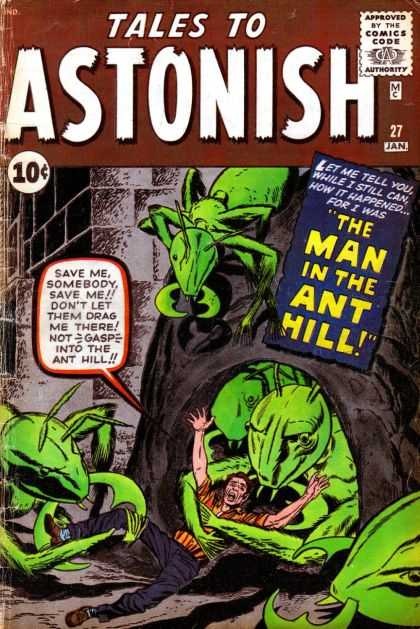
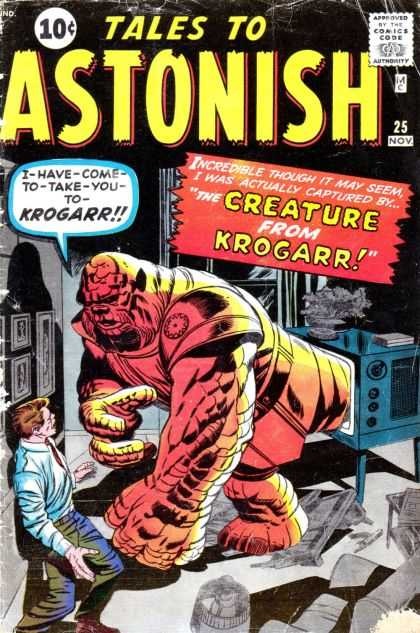
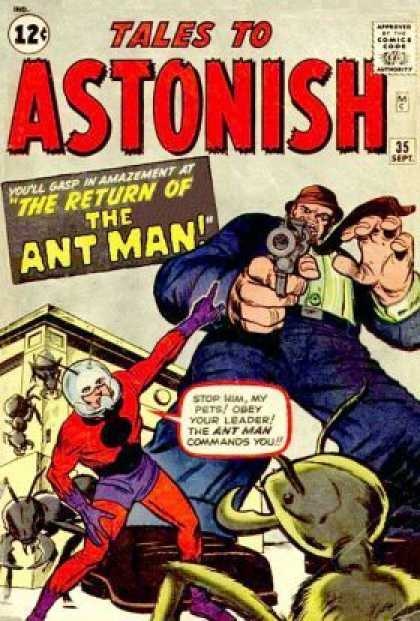
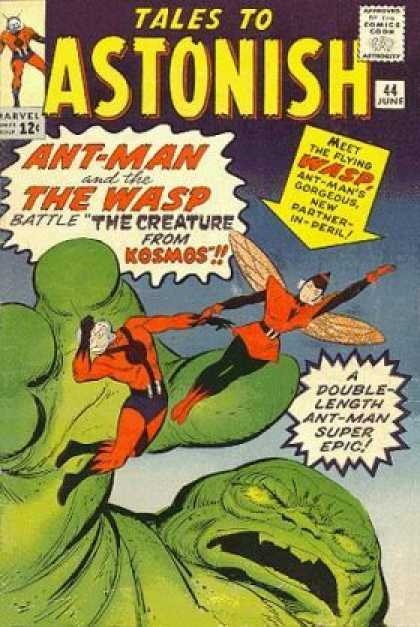
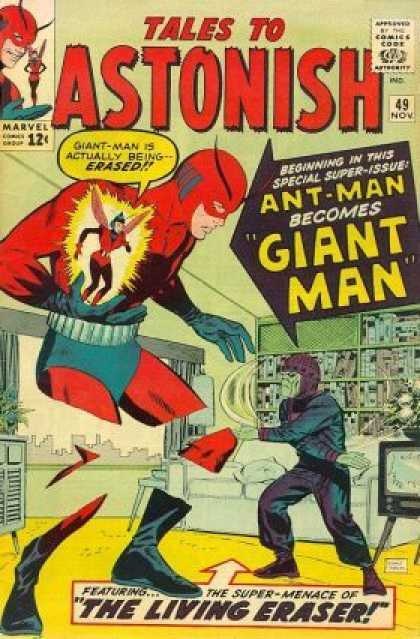
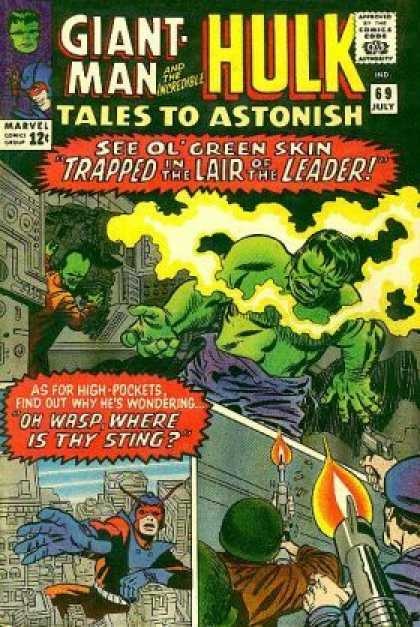
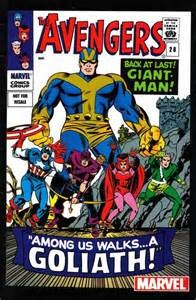
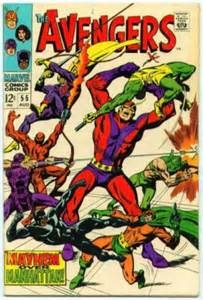
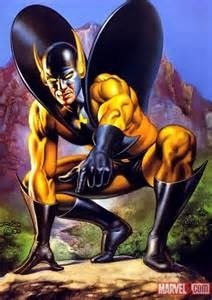
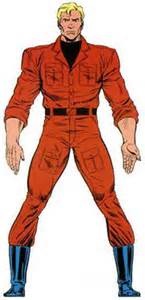
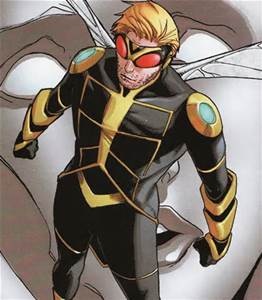

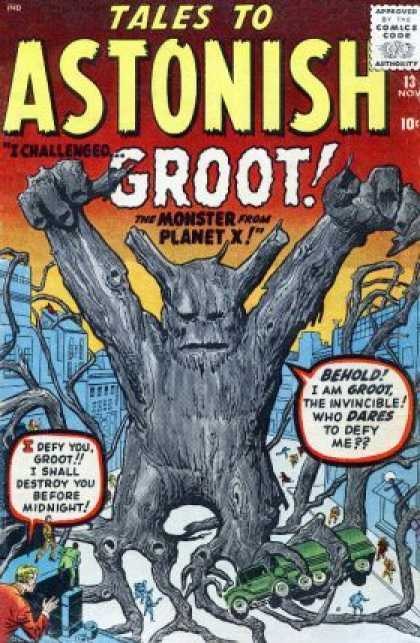
Comments are closed.